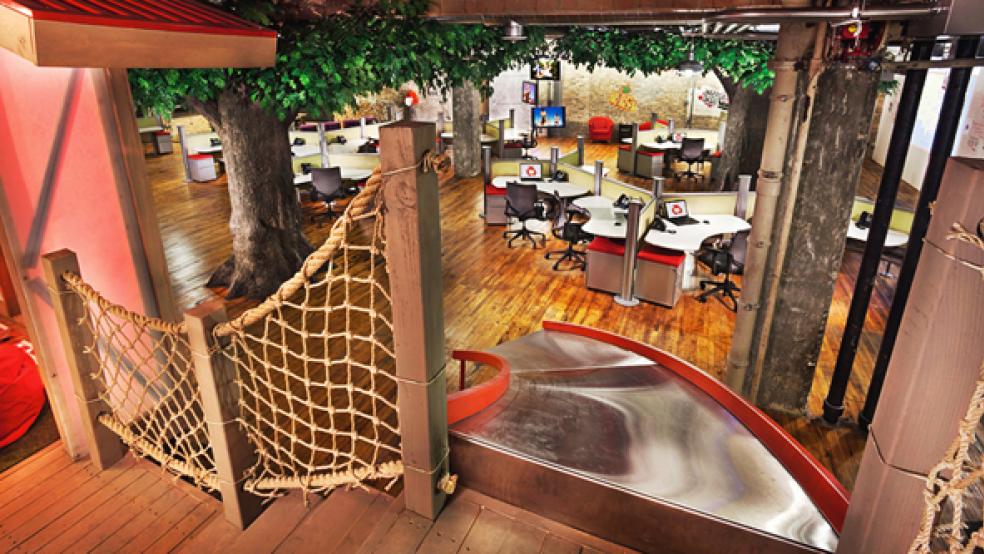Newsflash to employers: Even your best employees aren’t always working on official projects – they’re browsing Facebook, taking the occasional long lunch, and even carving out bits of time to work on their own “side” projects. (Note to my boss reading this: I’m sorry?)
Most employees are doing this behind the boss’s back, but some companies are catching on and, instead of berating the offending employees, actually encouraging them.
Call them the new “empowered employees.” They’re calling the shots on how they want to spend their time during the workday, choosing their own projects, making their own schedules, and even deciding how much vacation time they want to take during the year. And their bosses are fine with it.
RELATED: How Work Affects Your Love (and Sex) Life
Companies like IBM, Best Buy, Netflix and HubSpot, for example, have stopped counting employees’ vacation days. Philip Rosedale, the founder of Second Life maker Linden Lab, recently had his employees vote on how to divvy up the quarterly bonuses. Google, for its part, is well known for having official “hang out” spaces in the office, and allowing employees to spend 20 percent of their time on a side project of their choosing. Another CEO, Joe Reynolds of Red Frog Events in Chicago, Ill., even installed a tree house with a zip line in the middle of his office.
For many companies, these perks not only add to the bottom line, they drive innovation. The Fiscal Times talked to Ryan Tate, the technology gossip blogger at Gawker and author of The 20% Doctrine: How Tinkering, Goofing Off, and Breaking the Rules at Work Drive Success in Business about this growing trend.
The Fiscal Times (TFT): Why is this “empowered employee” movement happening now?
Ryan Tate (RT): Many companies use this to save money on research and development and still get ahead. In certain sectors like technology, there is a bit of a boom and competition for certain talent is very fierce. In the Bay Area, some of the most fiercely recruited people are ex-Google engineers. You see them at all the top companies, so it makes sense that companies are adding a lot of the same programs that Google has.
RELATED: 16 Countries Where People Work the Longest Hours
TFT: At Google, employees can spend 20 percent of their time on projects they’re personally interested in. How did this come about?
RT: There are varying accounts of it. Paul Buchheit, who built Gmail, has said it was one of the first 20 percent time projects. Buchheit had been given a mandate to do an email project, but there was internal resistance, so he did it as a side project. Google saw the financial potential of it very quickly, and encouraged him to keep the program going.
TFT: What about “goofing off” at work? A lot of offices now have ping pong tables or something like that. And Google has designated spots for hanging out with a friend or relaxing a little.
RT: When you see a ping pong table, the company is acknowledging that when people are at work, they’re not always working. You can’t force people to constantly work. The ping pong table is a visual surrender to the idea that employees need to blossom and do their own thing, even if just for fifteen minutes. It’s very similar to this idea of 20 percent time ― the employee is not going to be spending every hour working on officially sanctioned work.
But it doesn’t always work perfectly. There’s always the risk of putting too much energy into the side project or getting too distracted. But the goal is, “Let’s tap into some of this surplus time.”
TFT: When companies have let employees take unlimited vacation time, often those employees only take about three weeks off. Are jobs so competitive today that employees feel they can’t take time off?
RT: There’s absolutely a danger in that. Many people I talked to at Google were devoting way more time than one day a week [to their side project]. They weren’t taking time away from their main work, they were just devoting extra hours to the project. Sometimes when you give people room to do what they want, they work harder. Chris Wetherell, who worked on Google Reader, said he worked nights and weekends and busted his butt to get this thing alive because it became really personal for him. He doesn’t have regrets, but I could see how that could be harmful for a person who doesn’t have good work/life balance.
TFT: Could this 20-percent model expand to all sectors and companies – or is it more for creative and tech industries?
RT: It makes sense that it started in tech, because in software there’s not a big capital investment required to get a new project going. But it’s an idea that’s catching on increasingly outside of tech. Software is starting to power more types of businesses. You just need to give the employee time and you can work with your existing code editors and existing servers to create something very cheaply. With the web, it’s much more possible for media companies to do these experiments. We’ve also seen it extend to the hospitality industry, with Thomas Keller starting his pop-up restaurant Ad Hoc. The food truck movement proves that there are creative ways of getting around the barriers of creating new restaurants.
TFT: Could you ever envision a restaurant owner saying to her employees, “You can have 20 percent of your time to just think about better ways to do your job?”
RT: I don’t see it expanding to non-tech industries in the same way as it did at Google. I think Google had such a surplus of money and a willingness to give people long ropes to hang themselves with. It also ended up creating a lot of products that didn’t go anywhere, so it’s not an unalloyed success at Google. Outside of tech, this idea can only work if it’s adapted correctly to the industry or business. If you fundamentally believe it’s best to keep costs low and keep tight command over your employees, it might not make sense to do this. If, on the other hand, you’re the type of employer who is trying to find ways to encourage people’s innate creativity, then this might be something worth exploring.
TFT: Isn’t there a rebellious aspect to working on a side project -- and is some of that lost when a task is “approved” by the company?
RT: There is a danger with that. What I’ve found is that employees are really creative at finding ways of potentially pissing off their bosses. During Yahoo’s “Hack Days,” engineers seemed to constantly come up with projects that might be objectionable to their bosses.
An employee who wants the thrill of bending the rules will usually find a way of doing it. It’s a useful filter when you make people break the rules in order to get their ideas in front of executives. I read something the other day: “If your idea isn’t worth getting fired over, it’s probably not worth pursuing.”
TFT: How about in education: Should second graders be given time to work on their own projects?
RT: Second grade might be too early. At some point you need to learn structure. You want to learn the rules so you can break the rules.
TFT: Aren’t high school electives really 20 percent projects?
RT: Yes, and you also have a lot of freedom in college. It’s really when you get into the workplace that your work-scope narrows. We’re all becoming specialists, and that’s nice and rewarding that you get to be good at something. But I think we all like to play a little and get in touch with our inner second grader and explore.


